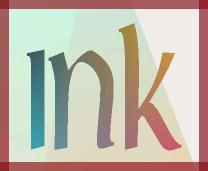|
January 2001
Straight to business this time, since I keep promising an article on ink refilling experiences. To briefly recap, I used a package called the Inktec system, which comes in a box with all the stuff you need. I bought mine at the Pomona Computer Fair, but you can also reach them at http://www.californiainkjet.com. When you open the package, there are two 20 ml black ink containers and a small white box. In the box are a 3 ml syringe, a plastic holder for your ink cartridge, and a plastic baggie with a bitty screw device, two plastic nozzles, and a sheet of plastic to keep things from getting messy. The process of refilling your old ink cartridge (in my case a Lexmark 12A1975 black) is fairly straight up. First you put the cartridge in the holder, which also doubles as a storage device to keep the ink from going dry in your refilled cartridge; it has a soft red bottom insert that fits against the print head part of your ink cartridge. The directions say that next you take the little drill tool and use it to widen the air hole at the top of your existing cartridge. Now when I tried this, I discovered that it is hard to drill that hole. On the other hand, it turns out that you don't really have to go too deep -- just enough to let the needle thingie through into the cartridge. After you've widened the hole, you unscrew the top from one of the 20ml ink containers and attach one of the plastic nozzles, which turn out to be 'dispensing needles' stored inside the plastic tubes. Screw the assembly together and voila, a syringe! From this point you take your trusty syringe, and inserting the needle into the expanded air hole, you aim towards the print head part of the ink cartridge and push it in as far as it will go. Still with me? Cool. Now we dispense the ink, taking care to inject it slowly. At this point, the instruction sheet is not real clear, saying to insert the 3ml syringe into the cartridge and withdraw about 1ml of ink. It turns out that what this means is that on the bottom of the cartridge holder there is an inverted red nipple that you use to insert the tip of the 3 ml syringe. I guess this makes some sort of a partial vacuum to force some ink out through the print head. Anyway I never got 1ml of ink out, and there was not much vacuum action, but I did get enough ink out of the print head to ensure that everything was working OK. Finally, clean everything, including yourself if you forgot about injecting the ink slowly, and pop the cartridge into your printer. Bingo. Run a head cleaning cycle and you're off to the printing races. Hey, why did I wait so long to do this? Refilling is pretty cool, and easy. The answer, of course, is that I needed prepackaged help, having heard war stories from the mail lists and our members who have tried to do all this at home with those big ink refill bottles. Ecch! A couple of other items. First, at least according to our former Webfoot the Duck person (hi, Peter), comes news that for all the hype about inkjet refilling, what is used in a lot of these ink cartridges is -- fountain pen ink! Now remember, Peter is (or was, actually) a duck, so don't take this as literal truth. But I do seem to remember some discussions on another list about inks and Photoflo. So if we have any enterprising users out there with an old (read 'out of warranty') printer and bags of time, let me know how it goes :-) Second, for those looking for a great deal on a Lexmark Optra Color 45 -- the wide format version of the Lexmark Optra Color 40 postscript printers that I rave about - check out eBay under the name of Xerox C20. Underneath the Xerox DocuPrint C20 faceplate is an Optra 45 printer. There have been some new ones showing up on eBay and I just got one for $99 ($124 including shipping and handling). Note that the Lexmark Optra 45 version is still in production and lists for $749. Also, our readers should know by now that these are real live Postscript Level 2 printers, which means that they will work just fine out of the box with Linux or a Mac, as well as OS/2! I'm using an Optra 40 as we speak on my 2 processor server -- WSeB and Linux Mandrake 7.2 Powerpak. Reach me at Tony@scoug.com.
By day, Tony Butka is a bureaucrat for Los Angeles County. In his other life he lives in a loft surrounded by computers, printers, and a host of vinyl records.
P.O. Box 26904 Santa Ana, CA 92799-6904, USA Copyright 2001 the Southern California OS/2 User Group. ALL RIGHTS RESERVED. SCOUG, Warp Expo West, and Warpfest are trademarks of the Southern California OS/2 User Group. OS/2, Workplace Shell, and IBM are registered trademarks of International Business Machines Corporation. All other trademarks remain the property of their respective owners. |









